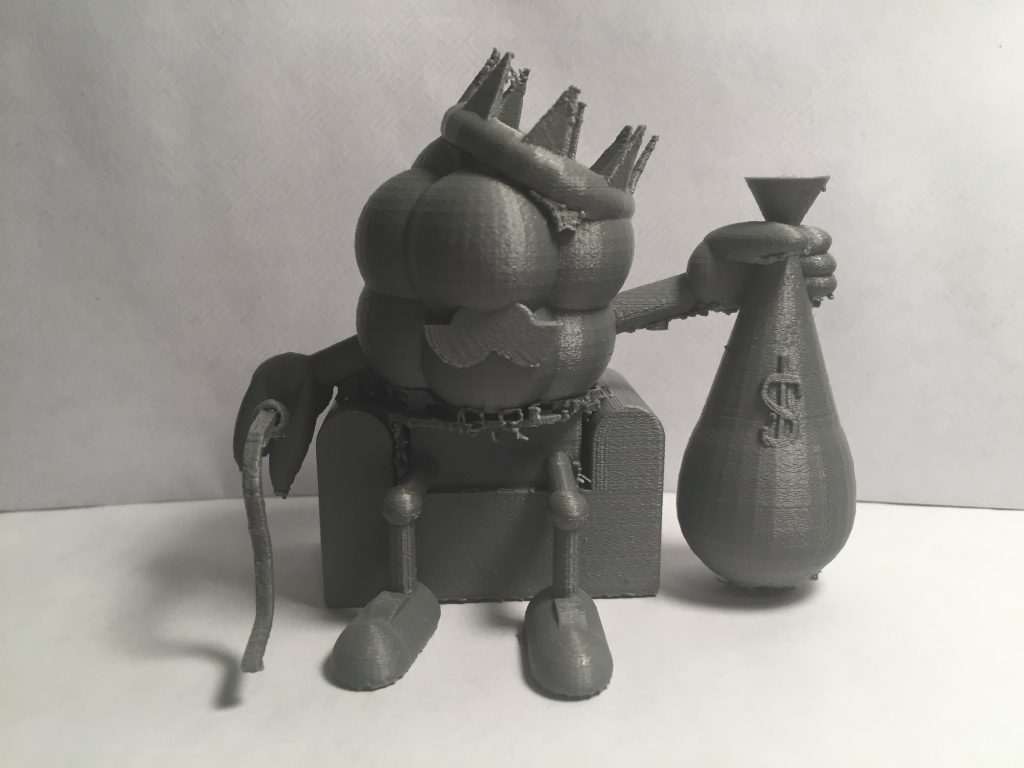For this module, the focus on 3D printing presented plenty of creative opportunity in how we can present our topics. This is not limited merely to depicting scale representations of physical objects. The process can be expanded to convey themes and ideas that concern issues and events related to these chosen areas of research.
To connect to my ongoing project, I chose to create a model of the ‘King Cotton’ caricature, popular in the antebellum and Civil War eras. Connected to the same themes that permeated the Confederacy’s failed attempts of cotton diplomacy, representations of the crop’s status in the South and abroad.
Portrayed in historical materials in a range of presentation formats – across multiple mediums and in both favorable and unfavorable light – depictions of ‘King Cotton’ carried a great deal of metaphor. Symbolism was popular in such imagery, particularly when the concept was satirized in cartoon form by Northern and British illustrators. My creation does not explicitly favor one portrayal or the other, but does represent several of the themes surrounding the idea of cotton as a king from before, during and after the war. If it were a printed image in the 1860s, I believe it would likely have been seen as critical of the concept.

Link to model: https://www.tinkercad.com/things/i8LOYDRCCqB-cotton-king
King Cotton sits upon his throne, carrying with him contrasting symbols of his effect upon the South. To the right, he carries the profits of cotton production, bringing wealth and power to the region’s governments and plantation elite. In his other hand, he carries a taskmaster’s whip, signifying the South’s continued reliance on slavery for its agriculture into the Civil War. Upon his head, he wears a lopsided crown – a bit too big for him – suggesting that he may not fit to be a ruler, nor keep the throne, yet he retains the title all the same.
A feature that did not make it into the final product, despite being modeled, was a series of chains from the throne, attaching the king’s foot to his seat of power. My intention in adding that was to convey the idea that the South had tied itself to the production of cotton and would not easily break itself free from its dependence upon the crop. For one reason or another, the feature was not successfully created by the printer, suggesting either that there are still limitations on the ability of some printers to finely detail their products, or that such additions have a higher likelihood of failing in the printing process.
Having worked with 3D modeled products in past experiences in public history, particularly in educational interactions with individuals and groups, the use of such technologies allows them opportunity to more closely connect with the objects of history. Though plastic, these items still carry some of the weight of the original artifacts – or in the case of symbolic items, related themes – which the public can draw upon to better understand the relevance to a historical subject.